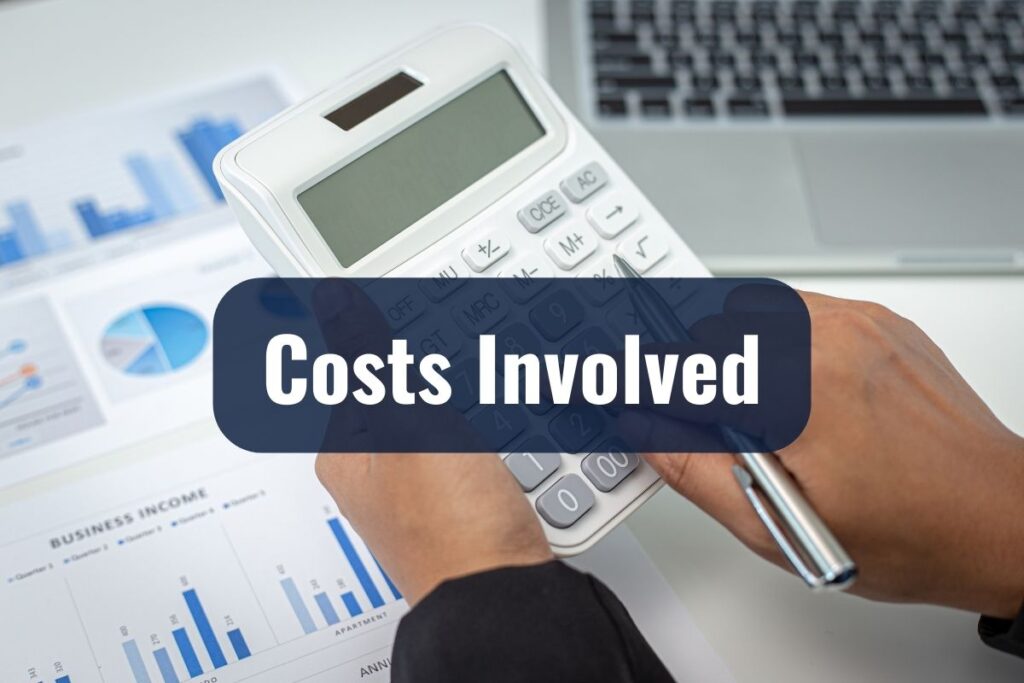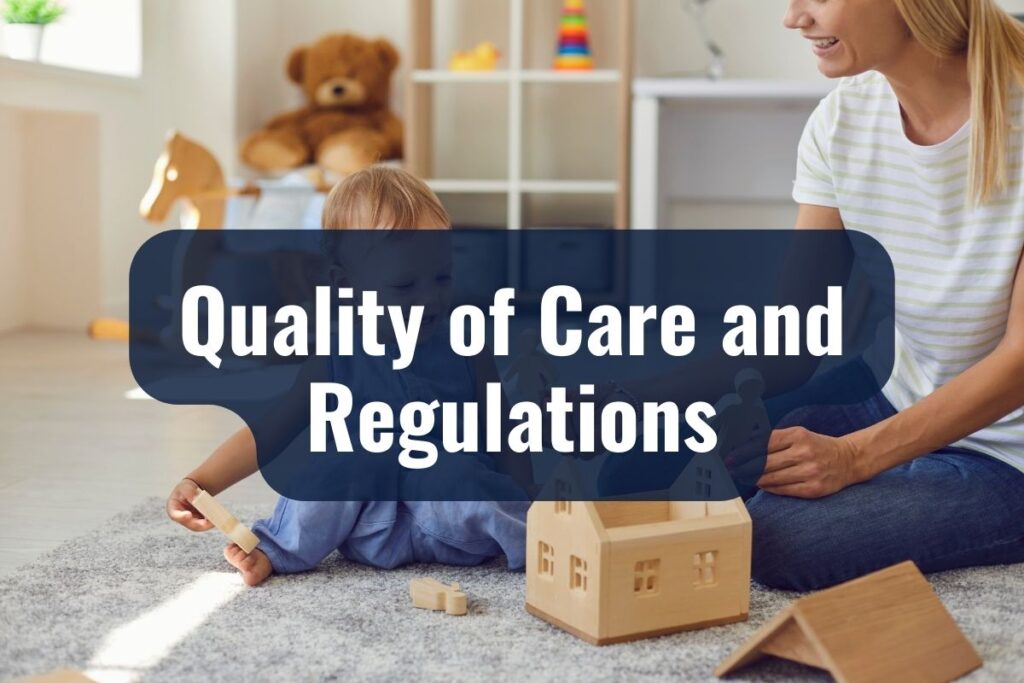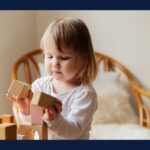One of the most crucial aspects of family life in Norway, especially for newcomers, is securing quality daycare for your children. In Norway, daycare centers are commonly known as “barnehager“, and they play an integral role in a child’s early years.
Whether you’re eyeing a local public kindergarten or considering a more private setup, this article aims to walk you through everything you need to know about daycare in Norway.
Key Takeaways
- Norwegian daycare centers offer high-quality, regulated care with a focus on outdoor activities.
- The admissions process can vary but usually involves an online application through your municipality.
- Costs are generally subsidized by the government, but additional expenses can add up.
- Language and cultural support are often available for children from diverse backgrounds.
- Day-to-day life in a Norwegian daycare includes both structured activities and free play.
Types of Daycare Facilities in Norway

In Norway, there are primarily two types of daycare facilities: public and private kindergartens, known as “kommunale barnehager” and “privateide barnehager,” respectively.
Public Kindergartens (Kommunale Barnehager)
Public kindergartens are funded and operated by the local municipality. These are often the go-to choice for many parents due to their affordability and accessibility. Quality is consistently high across the board, as these centers adhere strictly to Norway’s National Curriculum for kindergartens.
Private Kindergartens (Privateide Barnehager)
Private kindergartens, on the other hand, might be run by organizations or individuals. These may offer specialized programs, such as Montessori or Waldorf education methods.
However, they also adhere to the National Curriculum to ensure quality. Private daycares may have higher fees, but they often provide more flexible options for parents in terms of hours and additional programs.
Related: What You Need To Know About International Schools in Norway
Family Daycare Homes (Familiebarnehager)
If you’re looking for a more homely environment for your child, family daycare homes, or “familiebarnehager,” might be the right fit for you. These are usually small-scale operations run out of the caregiver’s home, providing a more intimate setting.
The groups are smaller, allowing for more personalized attention. However, these also adhere to specific regulations and guidelines to ensure quality care.
Open Kindergartens (Åpne Barnehager)
Open kindergartens are a less structured option and can be a good introduction for your child to the Norwegian daycare system. These centers do not require a permanent contract, meaning you can attend as needed.
They are open for a few hours each day and offer a place where parents and children can come for social interaction. It’s also a wonderful opportunity for parents to meet and discuss shared challenges or tips.
Admission Process
How and When to Apply
Starting daycare is a big step for any family, and if you’re new to Norway, you may find the admission process a bit puzzling at first. But don’t worry; we’re here to guide you through it.
The Main Admission Period
In Norway, the “main admission period” for daycares generally starts around mid-January and runs through mid-March. This is when most spots for the coming autumn are filled, so it’s advisable to apply during this period. However, if you’re moving to Norway at a different time of the year, there are often additional admission rounds or waiting lists you can join.
Essential Documents
When applying, you’ll usually need the following documents:
- Proof of residence
- Child’s birth certificate
- Parents’ employment details
Some kindergartens may also request additional information, such as immunization records or special care needs, to better understand how to provide for your child.
Most municipalities have an online application system where you can apply to multiple kindergartens at once. This is incredibly convenient and saves you the legwork of applying to each facility individually. In some cities, you can even specify your preferences, such as wanting a facility close to your home or workplace.
You’ll typically receive a response sometime in April if you’ve applied during the main admissions period. This will include information on whether your child has been granted a spot and at which kindergarten. At this point, you have the option to accept or decline the offer.
Costs Involved

Budgeting for Barnehage: Understanding the Expenses
One of the first questions parents often have when exploring daycare options in Norway is about the cost. While Norway is renowned for its high standard of living, it’s also known for its relatively high costs, including those for childcare. However, the government does offer some assistance to make this more manageable for families.
Government Subsidies and Grants
The Norwegian government provides financial support to families to help cover the cost of childcare. Parents are required to pay a monthly fee for daycare, but this fee is capped at a certain amount per month to make it more affordable.
The exact amount can vary from one municipality to another, but it’s generally quite reasonable, especially when compared to childcare costs in other countries. Low-income families may also apply for a reduced fee or even an exemption, depending on their financial situation.
Cost Differences: Public vs. Private
When comparing costs, it’s important to remember:
Public Kindergartens (Kommunale Barnehager): Typically less expensive because they’re subsidized by the government. Costs are generally standardized across public facilities within the same municipality.
Private Kindergartens (Privateide Barnehager): Can be more expensive, depending on the additional services they offer. However, they still adhere to the government cap on monthly fees, so while you may pay a bit more, it’s usually not dramatically higher.
It’s worth noting that some private kindergartens might charge extra for additional programs or activities, so make sure to inquire about any hidden or optional fees.
Other Potential Costs
- Enrollment Fees: Some centers may require a one-time enrollment fee.
- Material Fees: Certain programs may require you to pay for materials, outings, or special activities.
- Food Costs: While many kindergartens provide meals, some may require you to pack a lunch for your child or pay an additional monthly food fee.
Integration and Language Barriers
Moving to a new country is a significant transition, and it can be doubly challenging for children who may not yet speak the local language. If you’re concerned about how language barriers might affect your child’s integration into Norwegian daycare, you’re not alone—and fortunately, there are solutions at hand.
Norwegian kindergartens are accustomed to welcoming children from a variety of linguistic backgrounds. Many facilities offer additional language support to help non-Norwegian-speaking children integrate more seamlessly. This support often comes in the form of dedicated language classes or integration aides who can communicate in multiple languages.
Related: Find The Best Apps for Learning Norwegian Here
Cultural Sensitivity and Inclusion
It’s not just about language; it’s also about culture. Daycare centers in Norway are generally very conscious of the need for cultural sensitivity.
Staff are trained to make children from all backgrounds feel welcome and included. Whether it’s recognizing international holidays or incorporating global themes into learning activities, efforts are made to celebrate diversity.
Parental Involvement
Parents are often encouraged to take part in their child’s integration process. This could be through regular parent-teacher meetings, participation in activities, or simply maintaining open communication with the daycare staff. Parental involvement not only helps the child feel more secure but also allows you to stay updated on their progress.
Social Integration Through Activities
One of the lovely aspects of Norwegian daycare is the emphasis on group activities, often involving outdoor play. These activities provide a natural setting for children to interact and form friendships, breaking down language barriers in the most organic way: through play.
Language barriers can be a significant concern for parents, but it’s heartening to know that Norwegian daycare centers are well-equipped to support your child in this critical area. With a supportive environment and various resources to ease the language transition, your child will likely find their second home in a Norwegian daycare to be a place of both comfort and growth.
Quality of Care and Regulations

Peace of Mind: What Standards to Expect
As a parent, especially one new to a country, understanding the quality of care your child will receive in daycare is paramount. In Norway, the standards for early childhood education and care are quite high, regulated by both national and local guidelines. Here’s what you can expect:
The National Curriculum (Rammeplan)
All daycare centers in Norway, whether public or private, must follow the National Curriculum, known locally as “Rammeplan.” This framework sets the educational and care standards for kindergartens and ensures that children receive a balanced and enriching experience. The curriculum emphasizes not just academic skills but also social, emotional, and physical development.
Safety Measures and Protocols
Norwegian daycare centers take the safety of children extremely seriously. Staff undergo thorough background checks, and facilities must meet strict safety regulations, including first-aid, fire safety, and emergency evacuation procedures. Many centers also have secure entry systems to ensure that only authorized individuals can enter the premises.
Staff Training and Qualifications
Daycare staff in Norway are highly trained professionals, with many holding degrees in early childhood education. Ongoing training is common, ensuring that caregivers are up-to-date on best practices in child development, safety, and education.
Parental Reviews and Inspections
Most kindergartens welcome and encourage parental reviews. Local authorities also conduct periodic inspections to ensure that facilities meet or exceed the set standards for care and education. These reports are generally available for public review, providing an additional layer of assurance for concerned parents.
Open Communication
Open and consistent communication between parents and caregivers is highly encouraged. Many daycare centers offer regular updates on your child’s progress, including any concerns or milestones you should be aware of. This transparency is designed to make parents feel more engaged and reassured about the quality of care their child is receiving.
Day-to-Day Life in Norwegian Daycare
From Morning Goodbyes to Afternoon Hugs: A Typical Day in Barnehage
After sorting through all the admission procedures, costs, and quality checks, you might be curious about what an average day looks like for a child in a Norwegian daycare. Understanding the daily routine can not only help you prepare your child for this new adventure but also provide you with a clearer picture of their day-to-day experiences.
Morning Drop-Off and Breakfast
The day often starts with a calm and cozy morning drop-off. Parents are encouraged to take their time saying goodbye, making the transition smoother for both the child and themselves. Breakfast might be provided at the daycare, or you might send your child with their own, depending on the facility’s policy.
Planned Activities and Free Play
Each day usually includes a mix of structured activities and free playtime. This balance ensures that children can both learn and explore at their own pace. Activities could range from arts and crafts, storytelling, and music to more educational tasks that focus on basic mathematics or language skills.
Emphasis on Outdoor Play
Norwegian culture places a significant emphasis on outdoor activities, and this extends to daycare as well. Children are often taken outside for playtime, even in winter months, so they learn to embrace the beauty of all four seasons.
Whether it’s building a snowman, going on a nature walk, or simply enjoying a playground, outdoor play is an integral part of the daily routine.
Lunch and Nap Time
Midday generally includes lunch followed by a nap or quiet time, especially for younger children. Meals are typically balanced and nutritious, aligning with Norway’s dietary guidelines for children. Nap times vary depending on age and individual needs but are an essential part of the schedule to ensure that children are well-rested.
Parent Pick-Up and Goodbyes
The day winds down with some free play or perhaps a group activity before parents arrive for pick-up. It’s a time for kids to share their day’s experiences with friends before heading home. Caregivers usually offer a brief rundown of the child’s day to the parents during pick-up, cementing that essential link between home and daycare life.
Pros and Cons of Norwegian Daycare

Every Rose Has Its Thorn: Weighing the Good with the Not-So-Good
Choosing a daycare for your child is a monumental decision, especially when you’re in a foreign country. Like any system, Norwegian daycare has its set of advantages and challenges. Understanding these can help you make an informed choice that aligns with your family’s needs.
Pros
- High-Quality Care: The level of professional training and the structured curriculum ensure that your child receives an enriching experience.
- Outdoor Activities: The emphasis on outdoor play gives children a unique opportunity to engage with nature and stay active.
- Safety and Security: Rigorous safety protocols and background checks for staff make Norwegian daycares a safe space for your child.
- Financial Support: The government subsidies make daycare relatively affordable compared to other countries, and additional support is available for families with lower incomes.
- Cultural Inclusivity: With a focus on diversity and inclusion, children from all backgrounds are welcomed and supported.
Cons
- Language Barriers: While many centers offer language support, the primary language of instruction is usually Norwegian, which might be a challenge initially for non-Norwegian speakers.
- Limited Availability: Depending on the area, there might be a high demand for daycare spots, making it imperative to apply early to secure a place for your child.
- Additional Costs: Though the tuition is often subsidized, extra costs like enrollment fees, materials, or special activities can add up.
- Adaptation Period: Like any new environment, it may take time for your child to adapt, especially if they’re not accustomed to structured group settings or a different cultural background.
Being aware of both the positives and the complexities of Norwegian daycare allows you to make a more balanced decision. No daycare system is perfect, but the Norwegian model offers a thoughtful approach to early childhood education that many families find appealing.
Whatever your considerations, keep in mind that each child’s experience is unique. And while the transition might come with its share of adjustments, the overall benefits often make it a rewarding experience for young children.
- Utdanningsdirektoratet (The Directorate for Education and Training): Provides an overview of the National Curriculum and other educational guidelines.
- NAV (Norwegian Labour and Welfare Administration): Offers information on childcare subsidies and grants available for families.


